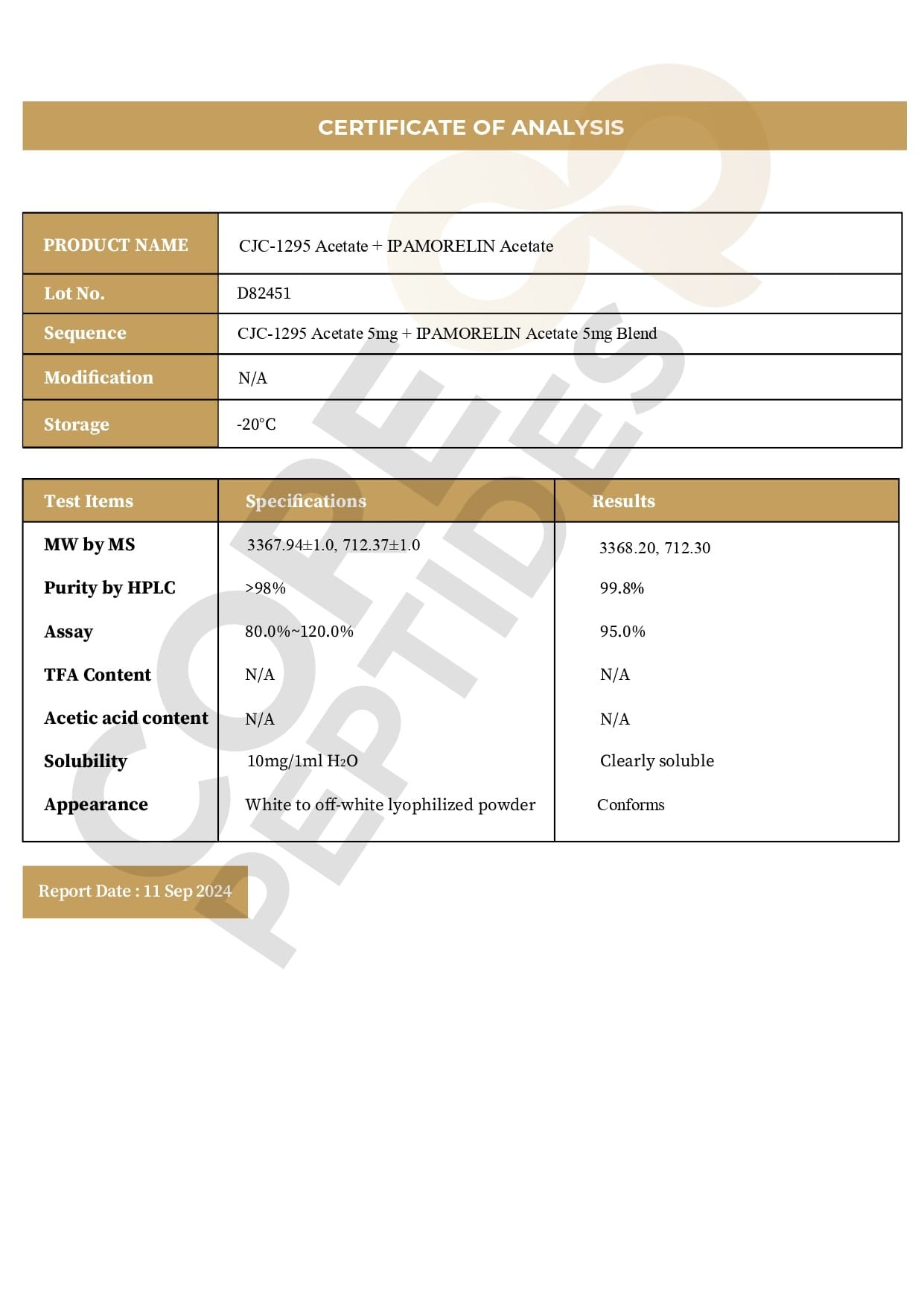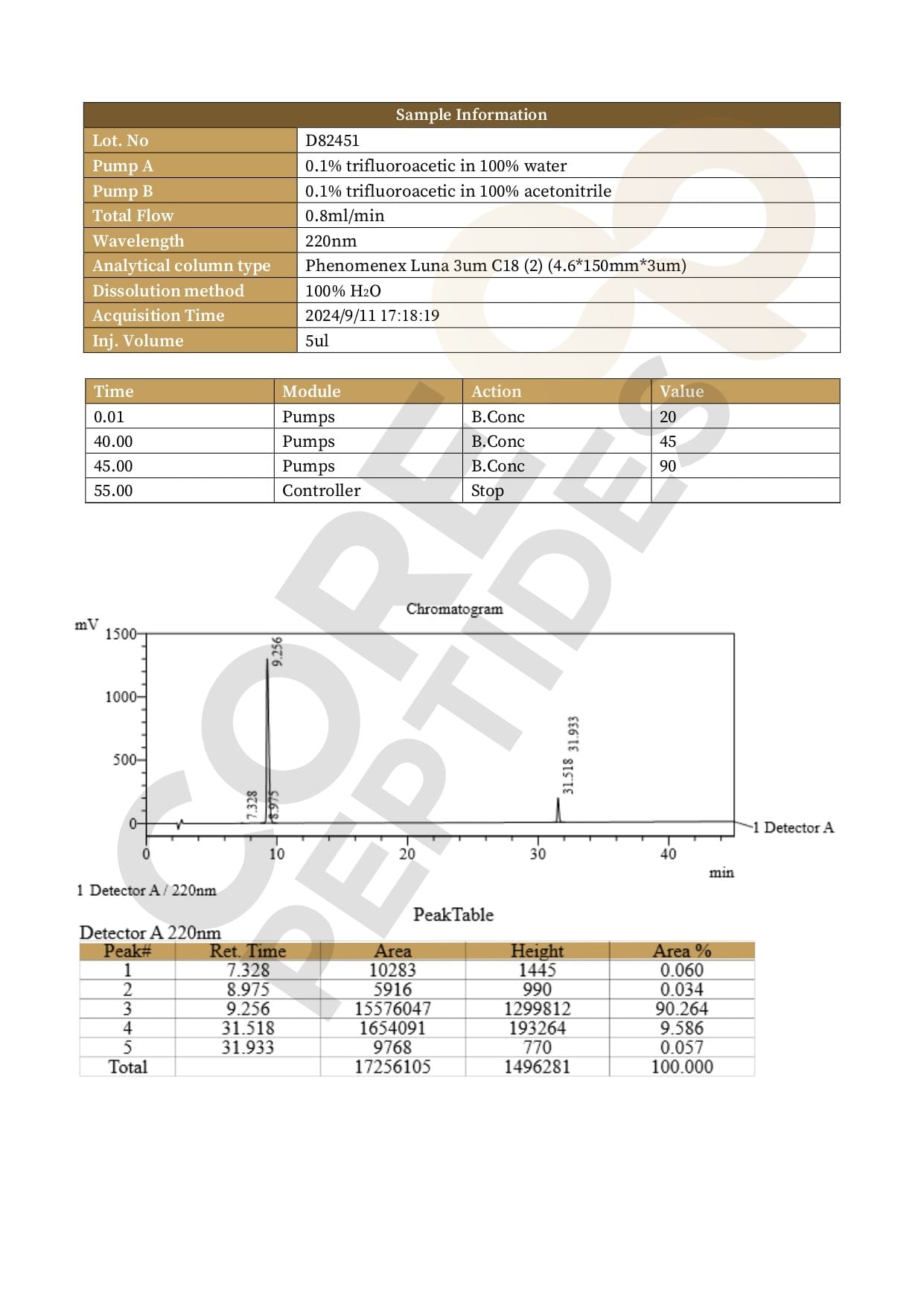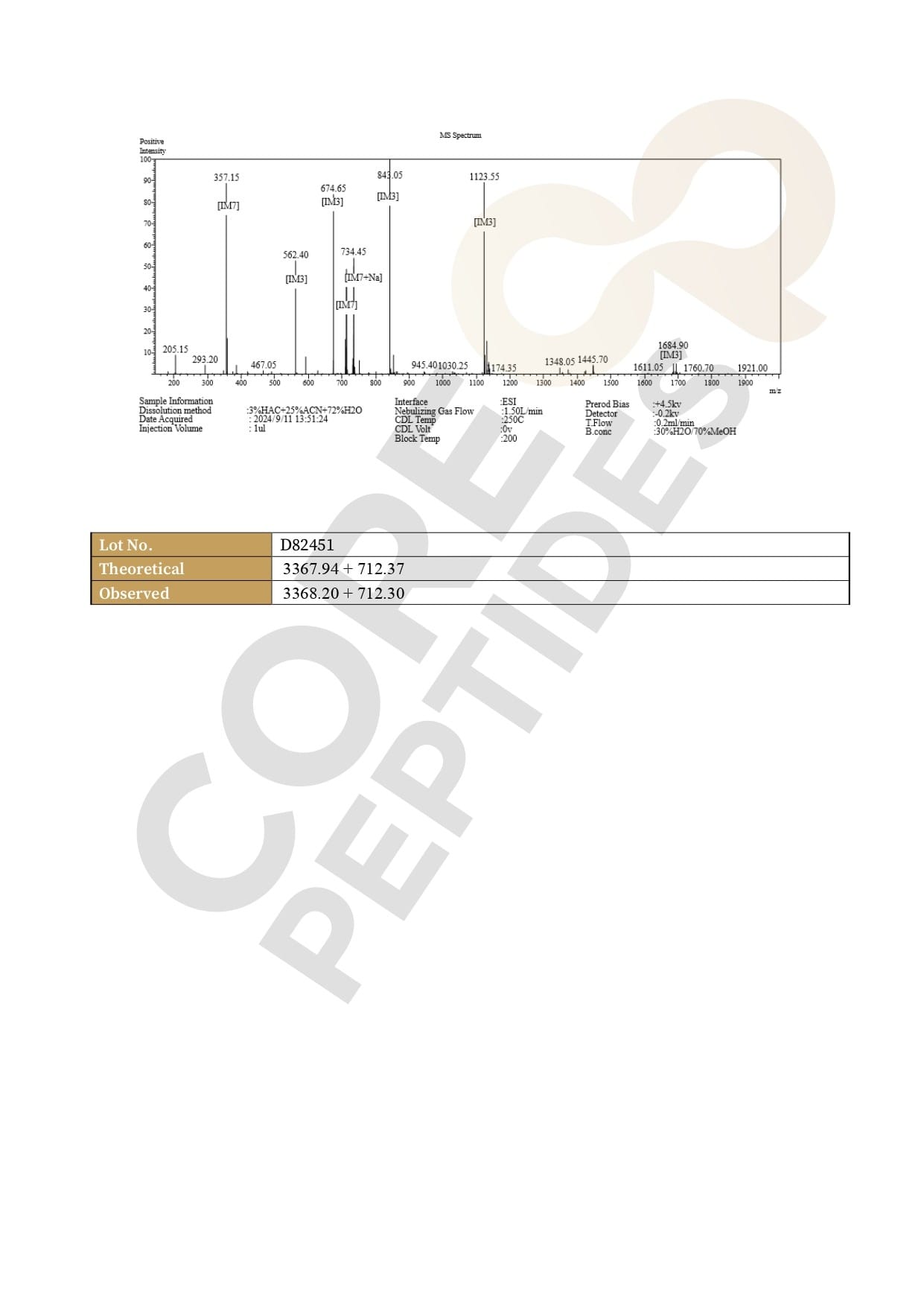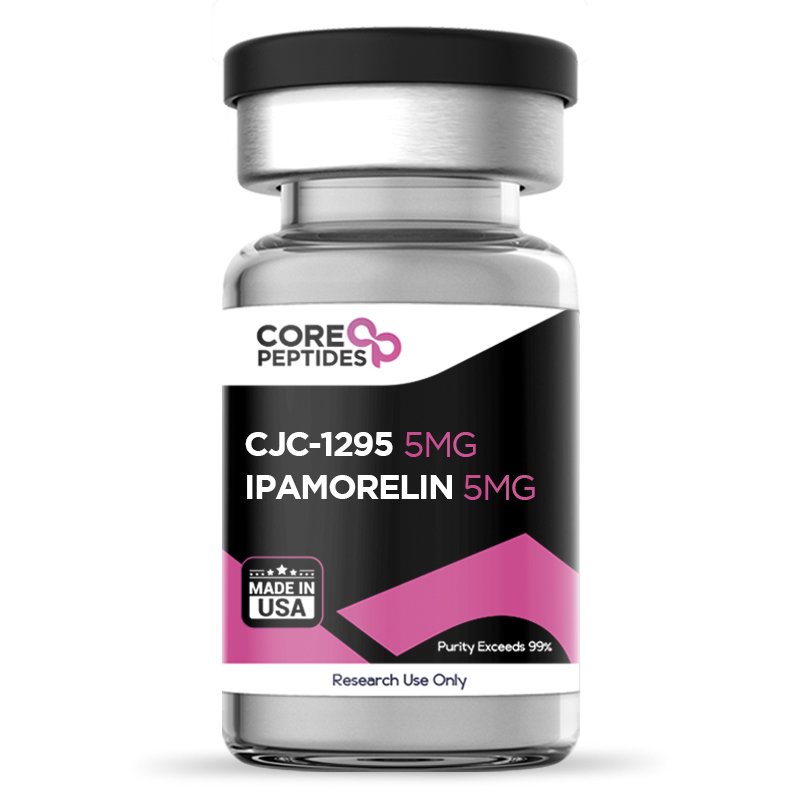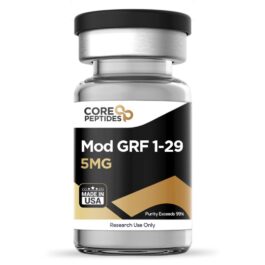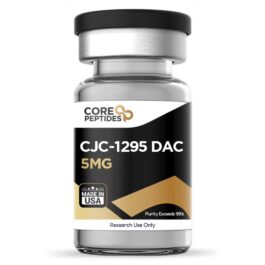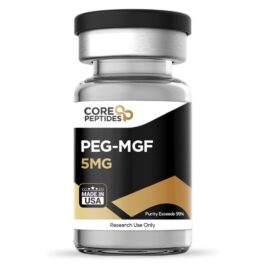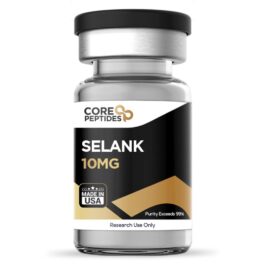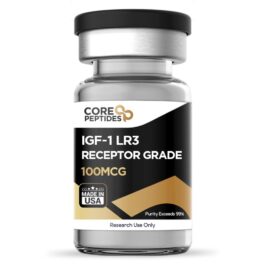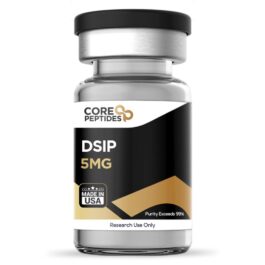CJC-1295 & Ipamorelin Blend (10mg)
$80.00
Size: 10mg
Contents: CJC-1295 NO DAC (5mg) & Ipamorelin (5mg)
Form: Lyophilized powder
Purity: >99%
SKU: P-CJCIPAM-10
FREE Shipping on $200+ orders
Discount per Quantity
| Quantity | Discount | Price |
|---|---|---|
| 5 - 8 | 5% | $76.00 |
| 9 + | 10% | $72.00 |
CJC-1295 & Ipamorelin Peptide Blend
Ipamorelin and CJC-1295 are both considered to be growth hormone secretagogues. Ipamorelin is a synthetic pentapeptide,(1) and CJC-1295 peptide consists of 29 amino acids.(2) Ipamorelin appears to fall into a category of peptides classified as growth hormone secretagogues (GHSs). These are peptides that are assumed to stimulate the release of the growth hormones, however are not considered growth hormone releasing peptides themselves. On the other hand, CJC-1295 has also been suggested by researchers to stimulate the release of growth hormone, primarily by mimicking the actions of the naturally occurring growth hormone-releasing hormone (GHRH). Both Ipamorelin and CJC-1295 peptides have been assigned by researchers to this class, studied for similar potential actions and apparently differing only in terms of their half-life and pharmacokinetic profiles.
Overview
CJC-1295 & Ipamorelin peptides both are suggested by researchers to augment the levels of the growth hormones through a possible triggering of the anterior pituitary gland. Scientists consider that once triggered, growth hormones may be naturally secreted, maintaining levels of growth hormones in the organism.(3)
CJC-1295 peptide is a tetrasubstituted version of GHRH 1-29, developed to represent the shortest functional sequence of GHRH. GHRH 1-29 consists of the first 29 amino acids of the native GHRH peptide, and may potentially stimulate growth hormone production in pituitary gland cells, called somatotrophs. The peptide has four amino acid substitutions in its structure, which scientists suggest may enhance its activity and resistance towards proteolytic enzymes. More specifically, the amino acids which are replaced appear to be the 2nd, 8th, 15th, and 27th amino acids. Owing to these substitutions, the peptide might be able to bind covalently to blood albumin, with trace amounts possibly able to bind to fibrinogen and immunoglobulin G (IgG). As a result, the apparent half-life of the peptide may increase from 10 mins to 30 mins.(4) This may lead to elevated levels of plasma growth hormone and insulin-like growth factor 1 (IGF-1).
CJC-1295 might also be linked with the purported drug affinity complex (DAC) element, which may attach to plasma proteins. In particular, the DAC element in CJC-1295 alludes to the connection of N-epsilon-3-maleimidopropionamide derivative of lysine at the C-terminal end. Merging the tetrasubstituted amino acid chain and the DAC element, CJC-1295 appears to display enhanced pharmacokinetics yet retains a comparable attraction to the GHRH receptors in the pituitary gland, similar to natural GHRH.(5) More specifically, researchers comment that when the peptide was “selected for further pharmacokinetic evaluation, where it was found to be present in plasma beyond 72 h.”
Ipamorelin is a man-made pentapeptide, also known as NNC 26-0161, that is believed to associate with a specific receptor in the pituitary gland cells, termed the growth hormone secretagogue receptor (GHS-R1a). These receptors are considered to be located in the hypothalamus. Moreover, GHS-R1a is often referred to as the ghrelin receptors because ghrelin seems to be its primary natural ligand. Ipamorelin appears to stand out from other GHSs as a potentially more selective compound, which may possibly stimulate the release of GH levels by somatotroph cells without also increasing other hormones produced by the anterior pituitary gland, such as prolactin.
When the peptide blend, sometimes also called the peptide stack, is presented in combination, research studies typically report that the Ipamorelin exerts initial action, exhibiting some sign of impact within the first two hours of presentation, and as it starts to wean off, the CJC-1295 peptide may gradually supplement action.(6)
Chemical Makeup
Molecular Formula:
- CJC-1295: C152H252N44O42
- Ipamorelin: C38H49N9O5
Molecular Weight:
- CJC-1295: 3367.9 g/mol
- Ipamorelin: 711.8 g/mol
Other Known Titles
- CJC-1295: CJC-1295 NO DAC; Mod GRF 1-29
- Ipamorelin: NNC 26-0161
Research and Clinical Studies
CJC-1295 & Ipamorelin Blend and Half Life Determination
Clinical studies have been conducted on test subjects to determine the half life of and individual pharmacokinetic profiles of the two peptides. In one late 1990s study,(6) a clinical trial was conducted on eight male test subjects with a concentration escalation design. The level of growth hormones was monitored after every instance of peptide presentation. At the end of the study, it was suggested by the researchers that there was a single episode of growth hormone release with the highest peak at 0.67 hours, after which there was an exponential decline up to negligible concentrations of the compound. This study concluded that the Ipamorelin peptide appeared to exhibit a short half-life of 2 hours, after which the potential action appears to begin to decline.
CJC-1295, by contrast, appears to have a much longer half-life. Researchers comment that a single introduction of the peptide may upregulate growth hormone production by somatotrophs for prolonged periods of time, thus apparently contributing “to an overall increase in [growth hormone] secretion … by 46%” and also potentially upregulating its main anabolic mediator insulin-like growth factor-1 (IGF-1) by 45% on average.(7) Another publication also observes that CJC-1295 may potentially upregulate “[growth hormone] concentrations by 2- to 10-fold,” and estimates that the half-life of the peptide ranges between 5.8 – 8.1 days.(8)
CJC-1295 & Ipamorelin Blend General Research
In this early 2000s study,(7) a clinical trial was conducted on male test subjects aged between 20 and 40 years old. Test subjects were divided into two groups; one group was presented with the placebo and the other with the peptide. Blood was sampled from the subjects one week before and after the presentation of CJC-1295 peptide (and placebo) to monitor the levels of growth hormone pulsatility. At the end of the study, it was suggested that CJC-1295 contributed to a 7.5-fold increase in the growth hormone pulsatility levels as compared to that of the placebo. Apart from apparently affecting the synthesis of growth hormone, scientists also suggest that CJC-1295 may interact with the survival and proliferation of the cells that synthesize it - the somatotroph cells in the anterior pituitary gland.(9) In one study on murine models, the authors commented that "CJC-1295 caused an increase in total pituitary RNA and GH mRNA, suggesting that proliferation of somatotroph cells had occurred, as confirmed by immunohistochemistry images.”
To exert these apparent effects, CJC-1295 appears to interact with specific binding sites on the GHRH receptor protein, leading to conformational changes in the receptor structure and potentially initiating a cascade of molecular events. The binding appears to activate intracellular signaling proteins that potentially act as molecular toggles.(10) These proteins are often referred to as G-proteins, which, upon activation, might drive the generation of secondary messengers like cyclic adenosine monophosphate (cAMP) or inositol trisphosphate (IP3.(11) Secondary messengers such as cAMP may set in motion protein kinases, enzymes believed to alter distinct proteins. These kinases possess a modulatory capacity for cellular activities and might phosphorylate transcription regulators, or proteins overseeing gene modulation. Once phosphorylated, these transcription regulators could migrate into the nucleus of somatotroph cells, possibly impacting genes associated with growth hormone formation.(7)
On the other hand, Ipamorelin appears to interact with the anterior pituitary gland cells via the N-terminus of GHS-R1a, which has binding sites that appear to recognize specific sequences in the secretagogue. When Ipamorelin meets this receptor, it may attach in a non-permanent way through forces like hydrogen bonds and forces between molecules called van der Waals forces. This attachment might make the receptor change its shape, which could start cell signals, mainly those involving G-proteins. GHS-R1a might work with a specific part of G-proteins called Gαq/11.(12) A main process started by GHS-R1a involves an enzyme called phospholipase C (PLC). Gαq/11 interacts with PLC, which may split a fat-like molecule, phosphatidylinositol 4,5-bisphosphate (PIP2), into two messaging molecules: IP3 (Inositol trisphosphate) and DAG (Diacylglycerol). IP3 appears to attach to places on a cell part called the endoplasmic reticulum, causing calcium ions (Ca2+) to be released. Also, DAG might turn on an enzyme called protein kinase C (PKC), which may add phosphate groups to other signaling molecules. All these steps might end with the ‘turning on’ of proteins that help release growth hormone from certain cells in the pituitary gland.(13)
CJC-1295 & Ipamorelin Blend and Nitrogen Balance
The apparent synergistic action of CJC-1295 and Ipamorelin on the production of growth hormone by the somatotroph cells in the anterior pituitary gland appears to result in a positive nitrogen balance and potential increase in lean mass in test models. In a particular study, investigators sought to probe the metabolic capabilities of Ipamorelin within the context of certain hepatic markers related to alpha-amino-nitrogen processing during an artificlaly triggered catabolism. The team evaluated the liver's ability to produce urea-N (CUNS), a potential metric of nitrogen processing within the liver. They examined the observable levels of messenger RNA (mRNA) linked to enzymes of the urea cycle in the liver, gauged the overall nitrogen equilibrium, and postulated the nitrogen quantities in different organs. It was proposed that Ipamorelin might have led to a 20% decline in CUNS, in contrast to the catabolic condition that was artificially prompted by the researchers. Moreover, it could have conceivably decreased the manifestation of urea cycle enzymes, reinstated nitrogen equilibrium, and theoretically adjusted or enhanced the nitrogen values in organs.(14)
CJC-1295 & Ipamorelin peptide blend is available for research and laboratory purposes only. Please review and adhere to our Terms and Conditions before ordering.
References:
- Raun K, Hansen BS, Johansen NL, Thøgersen H, Madsen K, Ankersen M, Andersen PH. Ipamorelin, the first selective growth hormone secretagogue. Eur J Endocrinol. 1998 Nov;139(5):552-61. doi: 10.1530/eje.0.1390552. PMID: 9849822. https://pubmed.ncbi.nlm.nih.gov/9849822/
- Lucie Jette et al, hGRF1-29-Albumin Bioconjugates Activate the GRF Receptor on the Anterior Pituitary in Rats: Identification of CJC-1295 as a Long Lasting GRF Analog, ResearchGate, January 2005.
- Raun K, Hansen BS, Johansen NL, Thøgersen H, Madsen K, Ankersen M, Andersen PH. Ipamorelin, the first selective growth hormone secretagogue. Eur J Endocrinol. 1998 Nov;139(5):552-61. doi: 10.1530/eje.0.1390552. PMID: 9849822 https://pubmed.ncbi.nlm.nih.gov/9849822/
- The Discovery of Growth Hormone-Releasing Hormone: An Update https://onlinelibrary.wiley.com/doi/full/10.1111/j.1365-2826.2008.01740.x
- Jetté, L., Léger, R., Thibaudeau, K., Benquet, C., Robitaille, M., Pellerin, I., Paradis, V., van Wyk, P., Pham, K., & Bridon, D. P. (2005). Human growth hormone-releasing factor (hGRF)1-29-albumin bioconjugates activate the GRF receptor on the anterior pituitary in rats: identification of CJC-1295 as a long-lasting GRF analog. Endocrinology, 146(7), 3052–3058. https://doi.org/10.1210/en.2004-1286
- Gobburu JV, Agersø H, Jusko WJ, Ynddal L (September 1999). “Pharmacokinetic-pharmacodynamic modeling of ipamorelin, a growth hormone releasing peptide, in human volunteers”. Pharmaceutical Research. 16 (9): 1412–6. doi:10.1023/A:1018955126402
- Ionescu M, Frohman LA. Pulsatile secretion of growth hormone (GH) persists during continuous stimulation by CJC-1295, a long-acting GH-releasing hormone analog. J Clin Endocrinol Metab. 2006 Dec;91(12):4792-7. doi: 10.1210/jc.2006-1702. Epub 2006 Oct 3. PMID: 17018654. https://pubmed.ncbi.nlm.nih.gov/17018654/
- Teichman SL, Neale A, Lawrence B, Gagnon C, Castaigne JP, Frohman LA. Prolonged stimulation of growth hormone (GH) and insulin-like growth factor I secretion by CJC-1295, a long-acting analog of GH-releasing hormone, in healthy adults. J Clin Endocrinol Metab. 2006 Mar;91(3):799-805. doi: 10.1210/jc.2005-1536. Epub 2005 Dec 13. PMID: 16352683. https://pubmed.ncbi.nlm.nih.gov/16352683/
- Alba, M., Fintini, D., Sagazio, A., Lawrence, B., Castaigne, J. P., Frohman, L. A., & Salvatori, R. (2006). Once-daily administration of CJC-1295, a long-acting growth hormone-releasing hormone (GHRH) analog, normalizes growth in the GHRH knockout mouse. American journal of physiology. Endocrinology and metabolism, 291(6), E1290–E1294. https://doi.org/10.1152/ajpendo.00201.2006
- Martin, B., Lopez de Maturana, R., Brenneman, R., Walent, T., Mattson, M. P., & Maudsley, S. (2005). Class II G protein-coupled receptors and their ligands in neuronal function and protection. Neuromolecular medicine, 7(1-2), 3–36. https://doi.org/10.1385/nmm:7:1-2:003
- Newton, A. C., Bootman, M. D., & Scott, J. D. (2016). Second Messengers. Cold Spring Harbor perspectives in biology, 8(8), a005926. https://doi.org/10.1101/cshperspect.a005926
- Yin, Y., Li, Y., & Zhang, W. (2014). The growth hormone secretagogue receptor: its intracellular signaling and regulation. International journal of molecular sciences, 15(3), 4837–4855. https://doi.org/10.3390/ijms15034837
- Bill, C. A., & Vines, C. M. (2020). Phospholipase C. Advances in experimental medicine and biology, 1131, 215–242. https://doi.org/10.1007/978-3-030-12457-1_9
- Aagaard, N. K., Grøfte, T., Greisen, J., Malmlöf, K., Johansen, P. B., Grønbaek, H., Ørskov, H., Tygstrup, N., & Vilstrup, H. (2009). Growth hormone and growth hormone secretagogue effects on nitrogen balance and urea synthesis in steroid treated rats. Growth hormone & IGF research : official journal of the Growth Hormone Research Society and the International IGF Research Society, 19(5), 426–431. https://doi.org/10.1016/j.ghir.2009.01.001
